When traveling for a long time, tires will appear damaged, and the most common problem is tire puncture. In this case, tire patching is an effective method that helps save both time and money.
So, how long does a patched tire last? Patch tires typically have an average lifespan of 7-10 years or more. This number is only approximate if you follow the procedure correctly!
The next section of the article will analyze more deeply for you to have more detailed and helpful information. Let’s check it out!
How Long Does A Patched Tire Last?If a tire is patched and repaired according to standard procedures, it can last for 7-10 years. Depending on the use of different one patching methods, the time is not the same, but it is not too much difference that the distance exists.
To use it for a long time, you need to keep quite strict rules, such as avoiding collisions in dangerous places, not driving too fast, and not patching the top twice. It can cause the car to have more severe speed problems than a sudden explosion that is dangerous in traffic in the long run.
The advice is to go to a reputable maintenance center to have the staff consider the most suitable car repair plan.
Types Of Repairs And Their DurationThere are three ways to patch tires to ensure safety standards when performing.
PatchThe way to increase the success rate when patching the car is to observe closely and determine the wound’s correct position.

This process takes about 20-30 minutes, and it can take longer depending on the severity of the wound. According to the manufacturer, the shelf life ranges from 7 to 10 years.
PlugNext is to use the plug to repair the tire. The method essence is to use an adhesive that can be to the size that fits the hole to prevent gas leakage to the outside. However, car tire companies do not agree with the above usage.
Over time, factors from the environment air cause the tire and plug to change, losing the protective shield so that the wound will return to its original state.
The corrosion of oxygen causes the loss of the steel belt, destroys the structure, and causes the separation to be dangerous for the user.
Repair Patch-PlugCombining patching with both methods increases the success rate of the repair.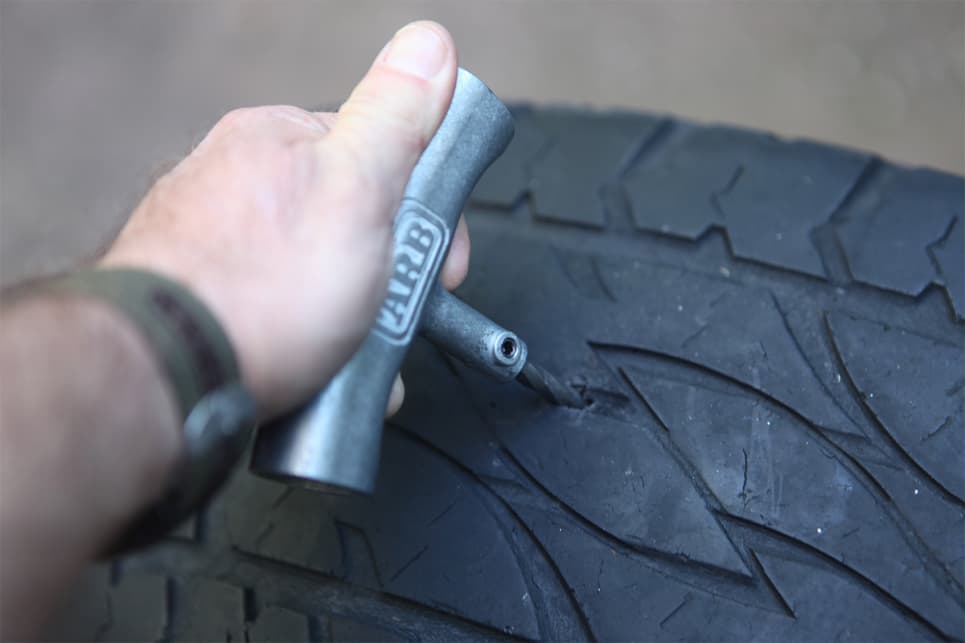 The way to do it is quite a lot of steps, perform the following stages:
The way to do it is quite a lot of steps, perform the following stages:
Thus, both plugging and patching the rubber will ensure airtightness at the wheel, which experts recommend is the most robust reinforcement method.
Watch this video for extended:
Is It Safe To Drive With A Patched Tire?There is no need to worry too much about safety when driving with patched tires.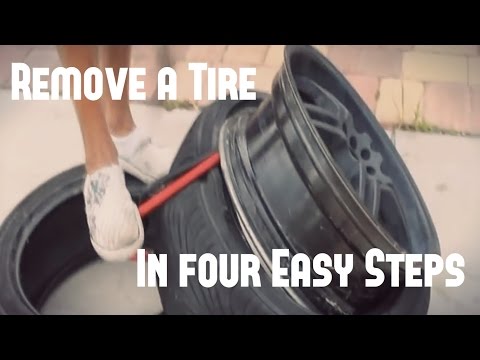 Instead of opting for a long run on a spare one or a flat tire, we can confidently tell you it’s a lot more secure.
Instead of opting for a long run on a spare one or a flat tire, we can confidently tell you it’s a lot more secure.
Once patched, it will return to function as a regular one even when traveling on rough roads.
However, to be longer and safer, we recommend limiting. If you often drive at fast speeds, you should change new tires to be sure.
In addition, instead of repairing it yourself or going to the centers with professional skills to get the best support.
Are Patched Tires Good?The answer is yes. While not entirely comparable to a new one, it will be better when traveling on a flat or spare tire.
The patched model has wholly prevented the risk of gas entering the interior, restoring the functions of a regular wheel for at least five years. So don’t worry, feel free to use the wheel like that.
Can A Tire Be Patched Twice?If the gap between the holes is not less than 16 inches, it is possible. However, car manufacturers still recommend that you do not patch more than twice, fix the location too close to each other to ensure as much safety as possible.
At regular intervals, please observe whether the used one has a condition of inflated or damaged in time to prevent it.
How Fast Does The Patch Dry?The patches will dry quickly; leave on for about 30 minutes to check for peeling. If this process is less than the above hours, one is that the glue you are using is not good, the other is that the method of patching is incorrect.
It is necessary to carefully check the condition of the inside and outside after the patch is done. Otherwise, you will have to lose money again.
ConclusionThere will be many ways to deal with a punctured tire; whether you change a new one or have a patch are all great ideas. But if you can choose, the second way sounds better.
Although changing tires is the best thing to do to keep the car moving safely, the patching method can save time and ensure enough quality factors.
In the above article, we have provided you with the necessary information related to the problem of patching tires. Hopefully, the above article will provide all the required information. Thank you for reading!
Hopefully, the above article will provide all the required information. Thank you for reading!
Have a flat tire? Wondering if you should replace it or get it repaired? While a patch is not the same thing as buying a brand-new set, it is a much cheaper option.
Everyone knows flats are a part of owning a car, but not everyone knows how to fix this problem. Driving on a flat is not an option, and using your spare is not long-term. If you want a durable option for cheap, a tire patch is the way to go.
But how long does a tire patch last? Will a DIY fix last the same amount as a professional patch job? Before deciding to get your tire patched, read this guide on tire patches.
A patch and plug repair can last around seven to ten years if installed correctly by a professional. A patch by itself will not last as long but is more reliable than driving on a spare.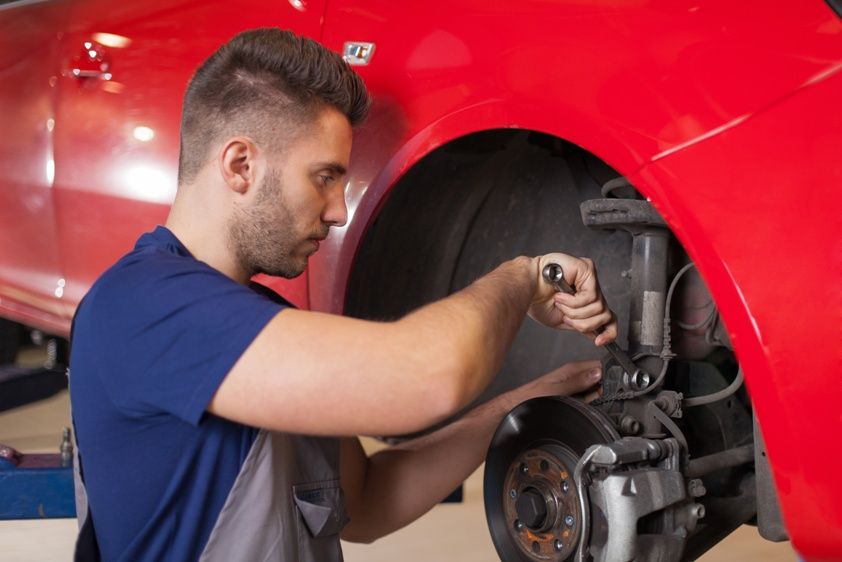
The answer to ‘how long does a tire patch last’ depends on the type of repair. Here are the most common types of patches or repairs:
There are many ways to repair a damaged tire, as long as the damage is not too bad. A patch is one method that works for leaks or small gashes anywhere in the center of the tread area. It will close a hole by sealing the rubber.
A patch can last 7-10 years if repaired by a professional. The Tire Industry Association emphasizes professional repairs are safer since technicians have the training and tools to complete the job efficiently.
Another way to repair a tire is to use a plug. This method is much less reliable but is a good option if you need to get somewhere to do a better repair. A plug repair can last up to 25,000 miles.
Yet another way to fix your flat is to do a patch-plug repair. This repair combines both a patch and plug to create a long-lasting solution.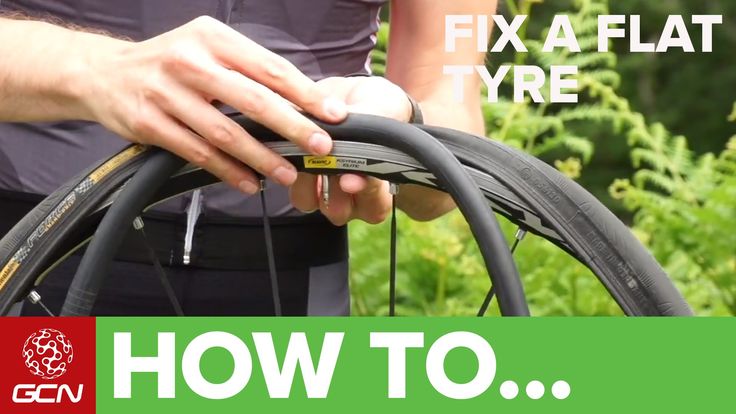 This method is better and safer than either getting your tire patched or plugged.
This method is better and safer than either getting your tire patched or plugged.
A patched tire should be safe to drive on for a reasonably long time. However, a patch-plug combination repair will be even safer to drive on for more extended periods. Be aware that doing the repairs yourself could make it unsafe to drive on.
Having the repairs done by a professional is the best way to guarantee safety. Repairing it yourself until you can get it to a professional is fine if you cannot see a professional right away. Using your spare until then is also a safe option until you can get the tire repaired professionally.
The answer here depends on how old the tire is when you get it repaired. The National Highway Traffic Safety Administration (NHTSA) recommends buying new tires every six to ten years, regardless of tread wear and repairs. This means that a patch repair will only make a tire as new as before the repair.
If you have to repair a fairly new tire, a patch and plug combination done by a professional should make it good as new. However, if done incorrectly, it may need replacing very soon. So make sure you get your repairs done professionally!
While a patch can last a very long time, it is not a permanent solution to a flat. For a more permanent solution, get a plug and patch combination repair. A combination of the two repair methods can last up to ten years, which is when you should replace all tires regardless of wear and tear.
Patches will dry instantly. However, a proper repair should take at least thirty minutes. The reason is that with a proper repair, you have to take the tire off the vehicle to inspect it for further damage.
If it takes less time than this, then the procedure is incorrect. Make sure the person performing the repair checks both the inside and outside tread for damage. Otherwise, you may end up having to get another repair.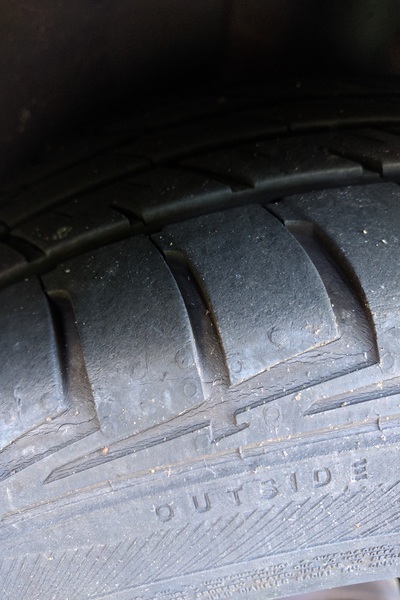
What repair method is best for you? Before buying a new tire to replace your flat, make sure you consider these cheaper options. As you can see, choosing which repair to get is not exactly straightforward.
When asking how long a tire patch lasts, it depends on the type of fix. A repair could last for a decent amount of time, although the patch or patch-plug repair would last the longest. Both methods cost about the same amount, so you don’t have to worry about money when choosing which repair is best for you. Whatever you decide, make sure you get your tire repaired as soon as possible!
Friday, July 22, 2016 12:00:09 pm Europe/Moscow
One of the important indicators of a modern tire is its mileage or wear resistance. If we turn to the meaning of the word "mileage", then we can define it as the strength (resistance) of an object to wear or abrasion during the normal operation of this very object.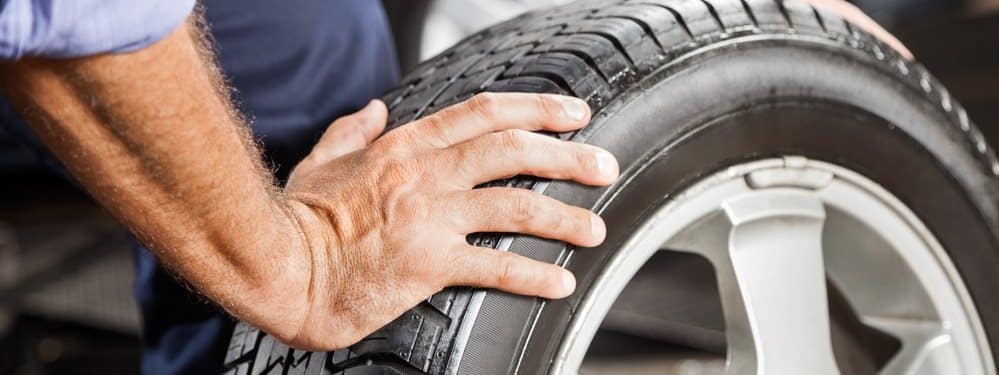 Thus, the terms "mileage" and "wear resistance" are synonymous. They describe the same function of a tire, but from different angles: mileage is the kilometers traveled, and wear resistance is the tire's ability to resist abrasion.
Thus, the terms "mileage" and "wear resistance" are synonymous. They describe the same function of a tire, but from different angles: mileage is the kilometers traveled, and wear resistance is the tire's ability to resist abrasion.
It should be noted that at the moment there is not a single regulatory document regulating the intensity of tread wear, as well as guaranteeing the absolute mileage of passenger tires. This situation is due to the fact that the wear rate of the tread rubber largely depends on the operating conditions.
The only indicator by which tire mileage can be determined is wear indicators. Wear indicators are protrusions in the drainage channels of the tire, the appearance of which is the basis for stopping the use of tires. The summer indicator has a height of 1.6 mm, while the winter one is much higher and is set at 4 mm. Also, each tire company has its own recommendations for the life of the tire.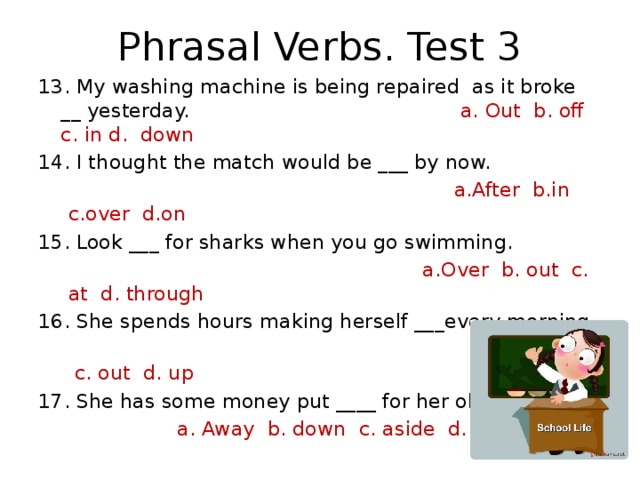 For example, MICHELIN recommends tires that are less than 10 years old.
For example, MICHELIN recommends tires that are less than 10 years old.
The main factors affecting the walnut or wear of tires include:
- Automobile
- Road
- Operational (Driving)
- weather (seasonal weather )
One of the most common causes of premature tire failure is the condition of the car, or rather its suspension. Unadjusted camber, damage or incorrect suspension or suspension system adjustment of the car will certainly affect the tires. As a result, as a rule, tires receive unnaturally rapid wear of a part of the tread or its individual elements until wear indicators appear. However, both legally and from a safety point of view, even a partial appearance of wear indicators at the tread level is the basis for the tire to be discontinued. In addition, wear of only part of the tire or its individual tread elements can lead to noise and vibration.
In addition, wear of only part of the tire or its individual tread elements can lead to noise and vibration.
Another factor that significantly affects tire wear is the surface on which you drive. The higher the abrasive properties of the coating, the more intense the tread will “melt”. In addition to rubber abrasion, some coatings that have large sharp stones in their structure (gravel, stony soils) can literally pull out pieces of rubber from the tread. Thus, the effect of physical destruction of the rubber structure in the tread is added to the natural wear of the tread. Therefore, you should be especially careful when using road tires outside of asphalt pavements.
The influence of a person as a driver and vehicle owner cannot be underestimated. And if about the aggressiveness of driving (this includes driving with sharp acceleration and braking, high-speed cornering and, at times, overly active taxiing), many have heard and understand that this literally “burns” the rubber on the tires, then they know much about the destructiveness of improper pressure fewer drivers.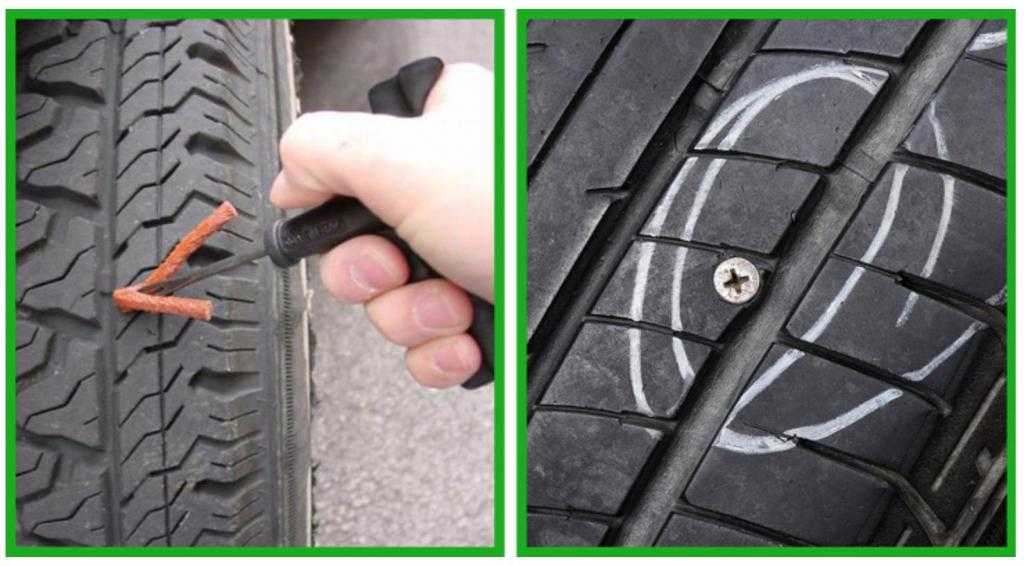 After all, worn shoulder areas of the tire with a still quite high tread are a consequence of low tire pressure, and an excessively worn central part of the tire is a sign of increased pressure. Also, do not forget that overloading the car above the norm will first of all also affect the accelerated wear of the tread.
After all, worn shoulder areas of the tire with a still quite high tread are a consequence of low tire pressure, and an excessively worn central part of the tire is a sign of increased pressure. Also, do not forget that overloading the car above the norm will first of all also affect the accelerated wear of the tread.
In addition, low-quality repairs should be attributed to operational factors that reduce tire mileage. Even the simplest puncture repaired by an unprofessional can lead to water ingress into the tire and subsequent rusting of the steel belt plies. This results in wave-like deformation of the tread, resulting in uneven wear. This type of wear can lead to vibration and noise.
Driving winter tires in summer not only results in reduced grip, but also increased wear on the rubber compound, which is softer than summer tires and therefore more susceptible to abrasion. The use of summer tires at low temperatures leads to chipping of the tread, which also reduces the life of car tires.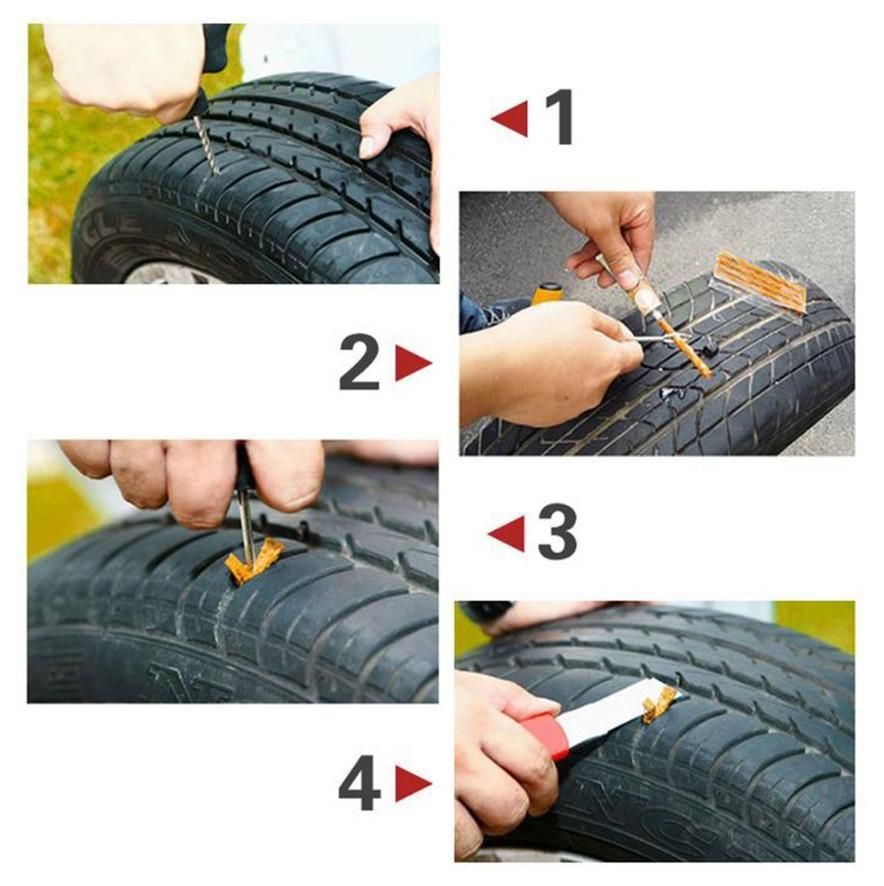
Author: Aleksey Kokorin
Experienced drivers are not surprised by such a trifle as a puncture, but beginners for the first time usually get confused in the sequence of actions, forget about important details and do not know what to do with a punctured wheel even in a tire shop - especially if they start offering choose from several options or intimidate with expensive repairs. Let's set up an operation algorithm when a flat tire is detected and figure out what to do right away and what to choose later.
What to do when you find a puncture
Having found a flat tire, first of all, you need to stop in a safe place, turn on the emergency alarm, assess visibility and, if necessary, set an emergency stop sign: according to traffic rules, it is installed at least 15 meters from the car in built-up area and at least 30 meters outside the built-up area. When choosing where to stop, consider the space to the side of the vehicle to handle a flat tire. You should not stop right on the road and in places where stopping and parking are prohibited: even if a punctured wheel belongs to the conditions of a forced stop, it is quite possible to drive several tens of meters on it to choose a safe and convenient parking place. At night or in conditions of limited visibility (for example, in fog or rain), it is imperative to wear a vest with retroreflective elements - this is required by clause 2.3.4 of the SDA and common sense.
When choosing where to stop, consider the space to the side of the vehicle to handle a flat tire. You should not stop right on the road and in places where stopping and parking are prohibited: even if a punctured wheel belongs to the conditions of a forced stop, it is quite possible to drive several tens of meters on it to choose a safe and convenient parking place. At night or in conditions of limited visibility (for example, in fog or rain), it is imperative to wear a vest with retroreflective elements - this is required by clause 2.3.4 of the SDA and common sense.
You are now ready to work on the wheel. We will sequentially consider several options for action, and then move on to ways to repair a damaged tire.
The most obvious solution to a flat tire is to replace it. If you have a spare tire that you are sure is in good condition, the best option is to install it and visit a tire shop to repair a punctured tire - such repairs will be more reliable and of high quality than doing it yourself.
If you do not have a suitable spare tire, but you do have a pump or compressor, you can assess the damage to the tire and try to pump it up again to get to the tire shop. It is better to start searching for an air leak with a valve (aka “nipple” or “nipple”): often a faulty spool becomes the cause of a flat tire. It is easy to check it: unscrew the protective cap (if there is one), pour water on it (or slobber it, as in childhood): air bubbles will leak. In this case, you can try to replace the spool valve by unscrewing it and screwing in a new one, but if there is no new valve, as well as a store nearby, you can try just unscrewing and screwing it back in. Regardless of whether it helped or not, you need to visit a tire shop to replace the entire spool or valve.
If the valve is tight and the tire is flat, it is most likely a puncture. The easiest way to find a puncture that is free of foreign objects is to pour water on the tire while looking at the surface: the damage will reveal itself as air bubbles. However, often the cause of the puncture can be found along with it: a self-tapping screw, nail or other arbitrary object sticking out of the wheel will clearly indicate the place of depressurization. In this case, you do not need to immediately remove the foreign object from the tire: it partially seals the hole, and if the pressure loss is slow, you can try to pump up the wheel and drive to the tire shop.
However, often the cause of the puncture can be found along with it: a self-tapping screw, nail or other arbitrary object sticking out of the wheel will clearly indicate the place of depressurization. In this case, you do not need to immediately remove the foreign object from the tire: it partially seals the hole, and if the pressure loss is slow, you can try to pump up the wheel and drive to the tire shop.
The same goes for wheels that are leaking from the rim or from a faulty valve. Usually, in this case, the air is bled slowly, and you can pump up the wheel and have time to get to the place of repair. By the way, rim leakage can occur due to disk deformation upon impact - for example, when hitting a pit with sharp edges. Such situations are fraught with damage to both the disk and the sidewall of the tire, in which case the disk will need to be corrected, and the tire repaired or even replaced. To avoid rim leaks, you need to inspect the rims every time you change tires. The loss of tightness occurs either due to corrosion or due to disc deformation, and not only steel, but also light alloy wheels can corrode. So if you see paint blistering or rust on the rim, the tires need to be put on rim sealant: when changing tires, this will be cheaper than the subsequent removal and re-tire to fix a leak on the rim.
The loss of tightness occurs either due to corrosion or due to disc deformation, and not only steel, but also light alloy wheels can corrode. So if you see paint blistering or rust on the rim, the tires need to be put on rim sealant: when changing tires, this will be cheaper than the subsequent removal and re-tire to fix a leak on the rim.
If you find a puncture, but there are no foreign objects in it, and you do not have a spare wheel and tire repair kits, there is another folk method of temporary "repair". You can screw a self-tapping screw into the found hole - if, of course, you have one. In extreme cases, you can look for a self-tapping screw in the cabin by unscrewing it from some interior detail. This method cannot be called reliable: it is unlikely to ensure complete tightness of the wheel, but at least it can help you get to the nearest tire shop.
And a couple more useful remarks. If the wheel is completely flat, then it is easier to inflate it without a spool: the latter must be unscrewed, then the tire must be inflated and quickly screwed back in. The fact is that the spool itself, when inflated, resists the compressor, and in the event of a loose fit of a flat tire to the disk, the power of a simple magazine compressor may not be enough, and the absence of a spool helps to increase air flow and facilitate the operation of the compressor. If this does not help, you can jack up the car by hanging a flat tire: this will improve the fit of the tire to the disk, and the chances of inflating the tire will increase.
The fact is that the spool itself, when inflated, resists the compressor, and in the event of a loose fit of a flat tire to the disk, the power of a simple magazine compressor may not be enough, and the absence of a spool helps to increase air flow and facilitate the operation of the compressor. If this does not help, you can jack up the car by hanging a flat tire: this will improve the fit of the tire to the disk, and the chances of inflating the tire will increase.
On-Site Repair Methods
Now let's look at the options for repairing a tire yourself using special materials that you should carry with you or, if a puncture caught you in the city, buy it at the nearest car shop.
1. The most common, cheapest and easiest way to repair yourself is to install a raw rubber band. The harnesses are sold complete with an abrasive awl to expand the hole in the tire and improve the contact of the repair harness with its edges, as well as a needle for installing the harness and an adhesive to fix it and at the same time seal the puncture.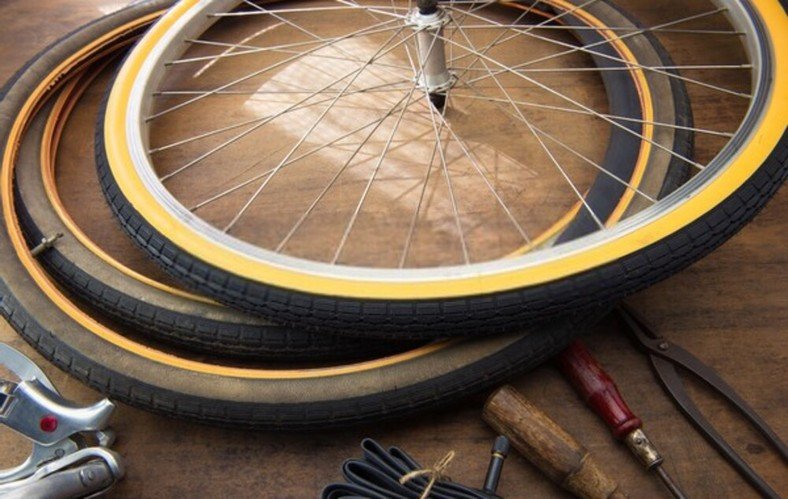 When choosing a repair kit in a store, you should pay attention to the following nuances:
When choosing a repair kit in a store, you should pay attention to the following nuances:
Install the harness in the following order. First, the found hole is expanded with an abrasive awl - you need to insert and remove it several times into the puncture site. Then the tourniquet is inserted into the eye of the needle, and glue is applied to it. After that, the needle with the tourniquet must be inserted into the hole in the tire and pulled out sharply - so that the tourniquet remains in the hole, and the needle comes out without it. If everything worked out, it remains only to cut the end of the harness flush with the surface of the tire and pump up the wheel.
The advantages of repairing with a harness are quite decent reliability, simplicity and low cost.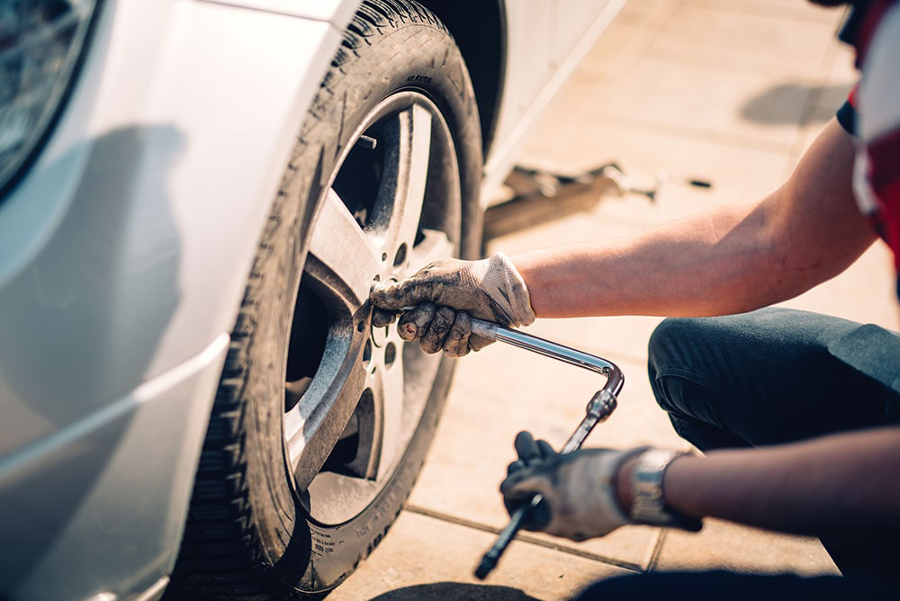 On a well-repaired tire, you can drive for a long time, and if the repair site starts to poison, you can either replace the harness or have the tire repaired in a quality service. Among the minuses is the possibility of damaging the cord during installation, as well as lower reliability compared to “full-fledged” repair methods in a tire shop. Strictly speaking, a tourniquet is still a temporary repair, so if it is possible to pump up a wheel and get to a tire fitting, then it is better not to enlarge the hole in the tire and get to the experts.
On a well-repaired tire, you can drive for a long time, and if the repair site starts to poison, you can either replace the harness or have the tire repaired in a quality service. Among the minuses is the possibility of damaging the cord during installation, as well as lower reliability compared to “full-fledged” repair methods in a tire shop. Strictly speaking, a tourniquet is still a temporary repair, so if it is possible to pump up a wheel and get to a tire fitting, then it is better not to enlarge the hole in the tire and get to the experts.
2. The second repair option is aerosol liquid sealants sold in cans. To repair a punctured tire with sealant, you need to remove the foreign object from the puncture site, then pour the sealant into the wheel through the valve, twist it to distribute the composition inside the tire, pump up the wheel and drive several kilometers at low speed for the final uniform distribution of the sealant.
Among the advantages of this repair is the simplicity and less labor intensity compared to installing a harness. However, there are also disadvantages: the larger the hole, the higher the chance that the sealant will not be able to eliminate it, and such a repair can affect the wheel balance. Compared to a tourniquet, it can be considered even less reliable and preferable, but simpler.
However, there are also disadvantages: the larger the hole, the higher the chance that the sealant will not be able to eliminate it, and such a repair can affect the wheel balance. Compared to a tourniquet, it can be considered even less reliable and preferable, but simpler.
Repair options at a tire shop
If you put on a spare tire and brought the wheel to a tire shop, you may also be offered several repair options. Consider the most popular with an indication of the advantages and disadvantages.
1. The first repair method is the same harness installation as described above. As we remember, the tourniquet refers to a temporary repair, so among tire specialists this method is considered bad form, but many workshops do not exclude it from the list of services. All the advantages and disadvantages are the same here: such a repair will be the fastest, simplest and cheapest, but less reliable than other methods. It is worth choosing it in cases where the price and / or speed of the procedure is more important to you than anything else.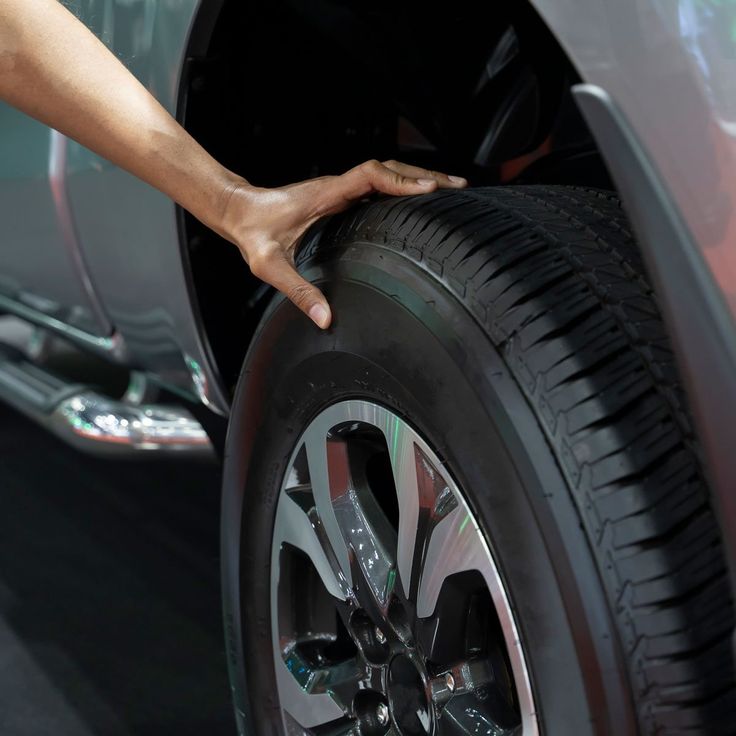 If quality is a priority, then it is better to fork out for the options listed below.
If quality is a priority, then it is better to fork out for the options listed below.
2. The second option for repairing a puncture is to install a patch on the inside of the tire, the so-called cold vulcanization. In this case, the tire is removed from the disk, the surface around the puncture is treated with an abrasive, and the damage is sealed with a special patch. This is a more preferred repair method than a tourniquet: it is more reliable and durable, especially in the case of side punctures, when not the thick tread part of the tire is damaged, but the thinner sidewall. Among the minuses, only a higher cost can be noted: in addition to the actual tire repair, you will have to pay for the removal and installation of the wheel (or do it yourself), tire fitting and balancing.
3. The third option is a "complex" of the first and second: the installation of the so-called repair "fungus". The “hat” of the fungus is a patch, and the “leg” is threaded from the inside of the tire to the outside. After gluing the patch, the excess part of the leg is cut off, as in the case of the tourniquet. Thus, not only the inner surface of the tire is closed, but also the hole itself. The advantages and disadvantages of this repair method are generally the same as those of a patch.
After gluing the patch, the excess part of the leg is cut off, as in the case of the tourniquet. Thus, not only the inner surface of the tire is closed, but also the hole itself. The advantages and disadvantages of this repair method are generally the same as those of a patch.
4. An extreme, “emergency” measure when repairing a punctured wheel is to install a camera in it. Typically, this method is used for tires that are no longer worth repairing, or “for reliability” after repairing a complex puncture. It should be understood that almost all modern tires are tubeless, that is, they are not designed to install a camera, so it’s not worth driving a wheel repaired in this way for a long time. Installing a tube is a temporary solution for riding until a new tire is purchased, and sometimes such wheels are left as spares. So this repair method can be kept in mind as a backup.
In conclusion
We deliberately left out of this text such methods as combined repair of tires with a tourniquet and a patch and hot vulcanization.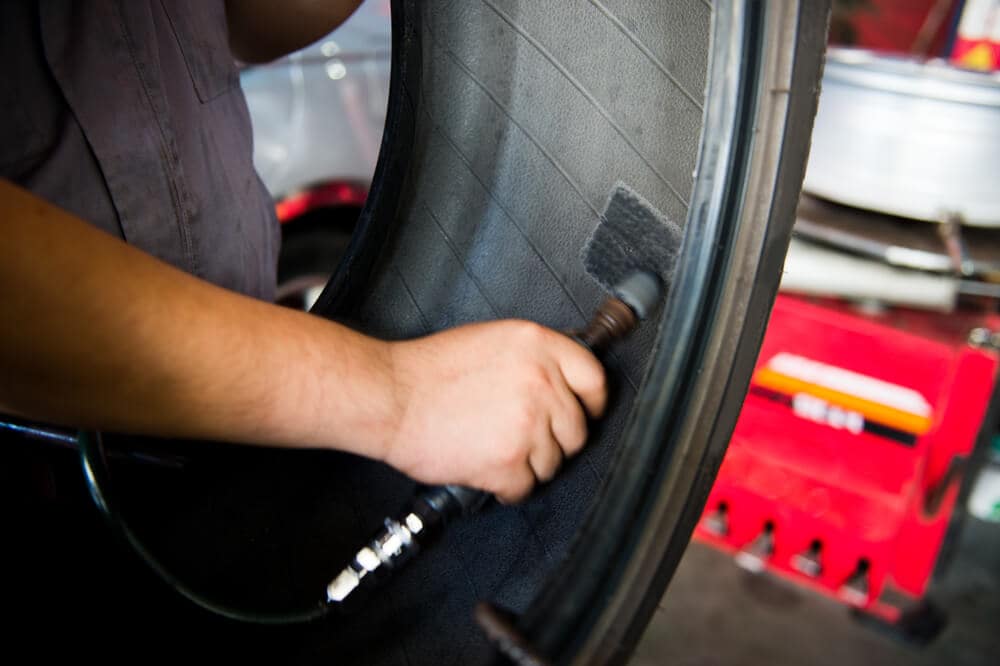 The first is used quite rarely and for specific damage, and it is enough just to know about its existence. Well, the second is used to repair serious side cuts, and it is not only rare, but also very expensive. The cut site in this case is prepared, filled with raw rubber and processed with a hot press for vulcanization. Equipment for this procedure is not available in every tire shop, and the cost of repair can be about half the cost of a new tire.
The first is used quite rarely and for specific damage, and it is enough just to know about its existence. Well, the second is used to repair serious side cuts, and it is not only rare, but also very expensive. The cut site in this case is prepared, filled with raw rubber and processed with a hot press for vulcanization. Equipment for this procedure is not available in every tire shop, and the cost of repair can be about half the cost of a new tire.
interesting popular questions
Articles / New cars So that's what you are, Moskvich 3: getting acquainted with the car at the official start of production Yesterday, November 23, the Moscow Automobile Plant, which for a long time existed only in the status of a Renault Russia enterprise (until 2014 it was called Avtoframos) and stood idle for more than six months after the.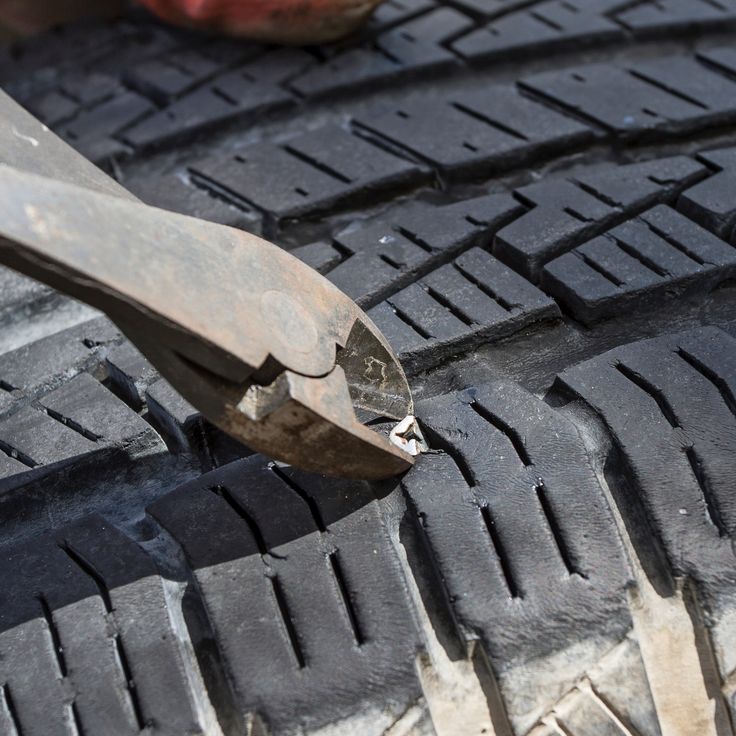 .. 1676 3 2 11/24/2022
.. 1676 3 2 11/24/2022
Articles / Practice What are universal, repair and sports catalysts and is it worth installing them Among the many promotional offers for removing the catalyst, there are others: in them, motorists are offered not a simple removal of the catalyst, but its replacement with a universal, repair one ... 852 0 one 11/23/2022
Articles / Practice Do I need to warm up the car before driving in winter: we understand in detail In my personal rating of debatable and provocative topics, the articles “how to warm up a car in winter” take an honorable first place in terms of the number of absurdities, mistakes and other shortcomings. T... 2601 one 3 11/22/2022
T... 2601 one 3 11/22/2022
Test drives / Test drive Haval Dargo vs Mitsubishi Outlander: the dog is barking, the stranger is coming In the Haval dealership in the south of Moscow, life is in full swing: buyers look at cars, communicate with managers and sign some papers. While I was waiting for the test Dargo, the same cross... 17365 7 205 13.09.2022
Test drives / Test drive Motor from Mercedes, emblem from Renault, assembly from Dacia: test drive of the European Logan 1.0 It would seem that what's new can be told about the second generation Renault Logan, known to every Russian taxi driver, as they say, up and down? However, this car has.